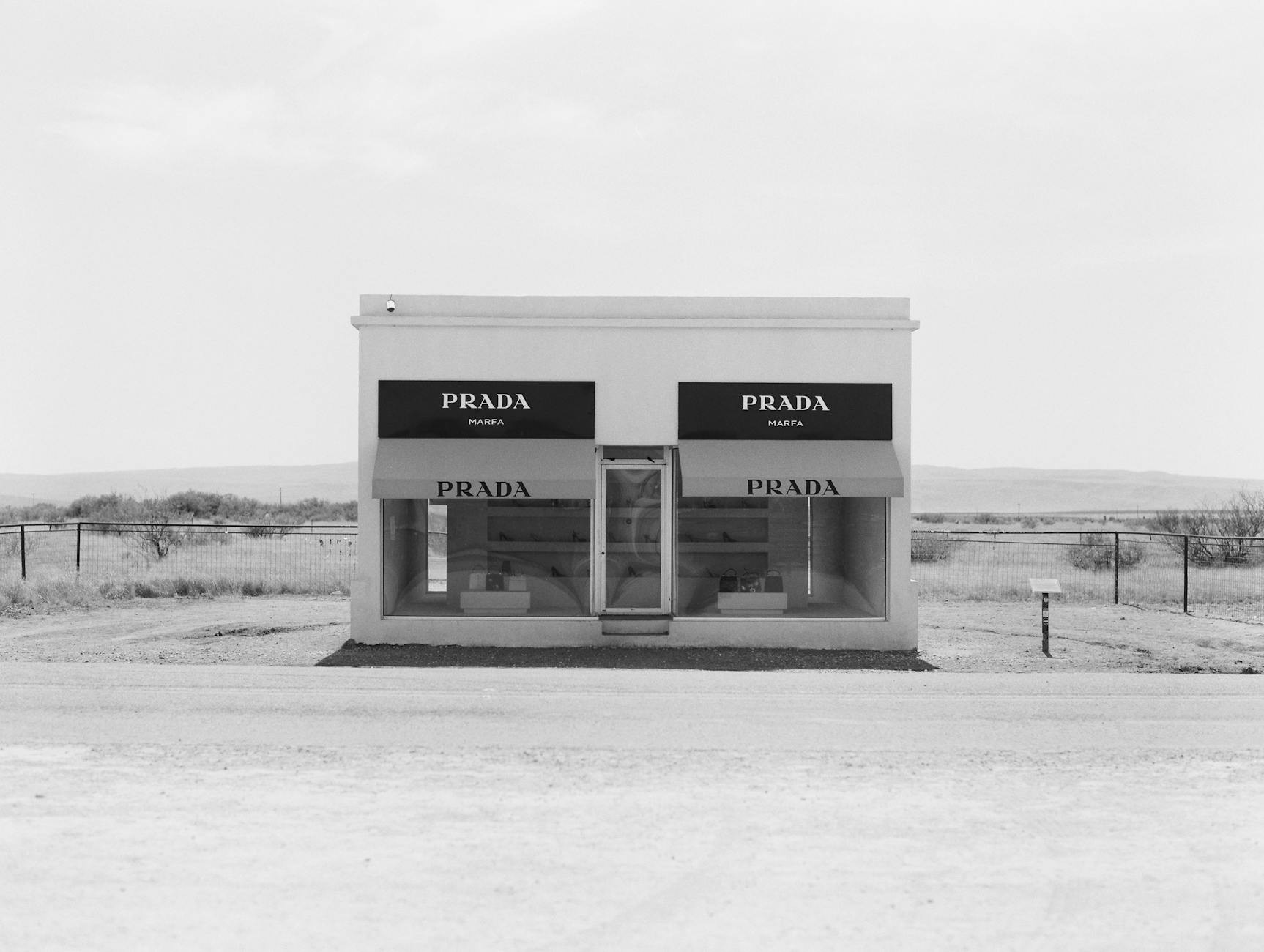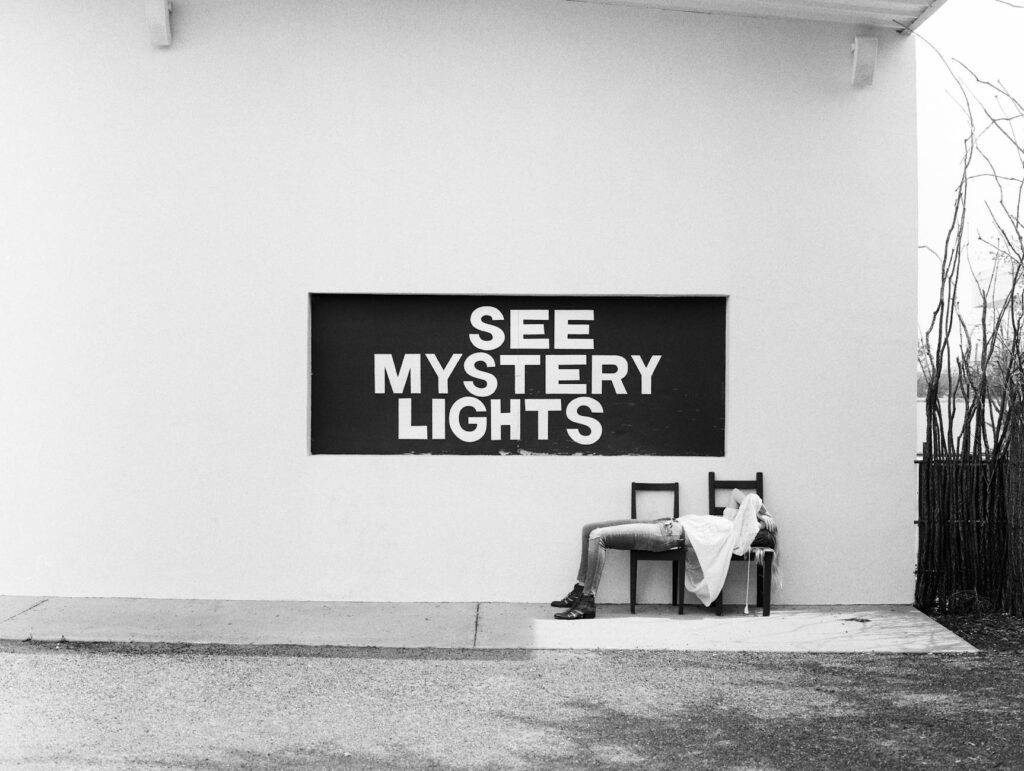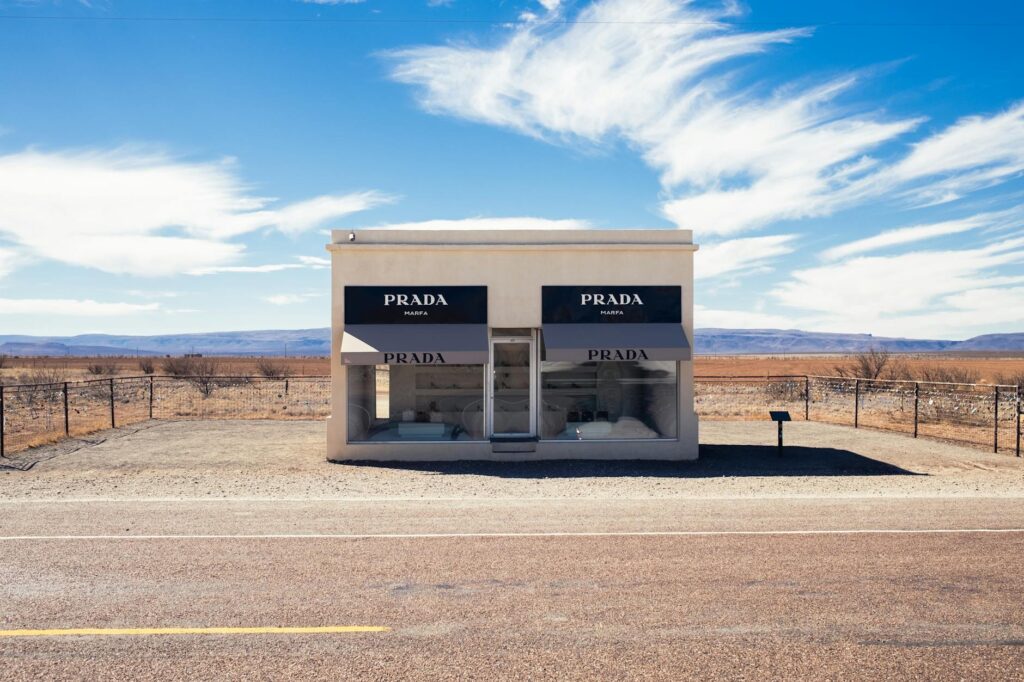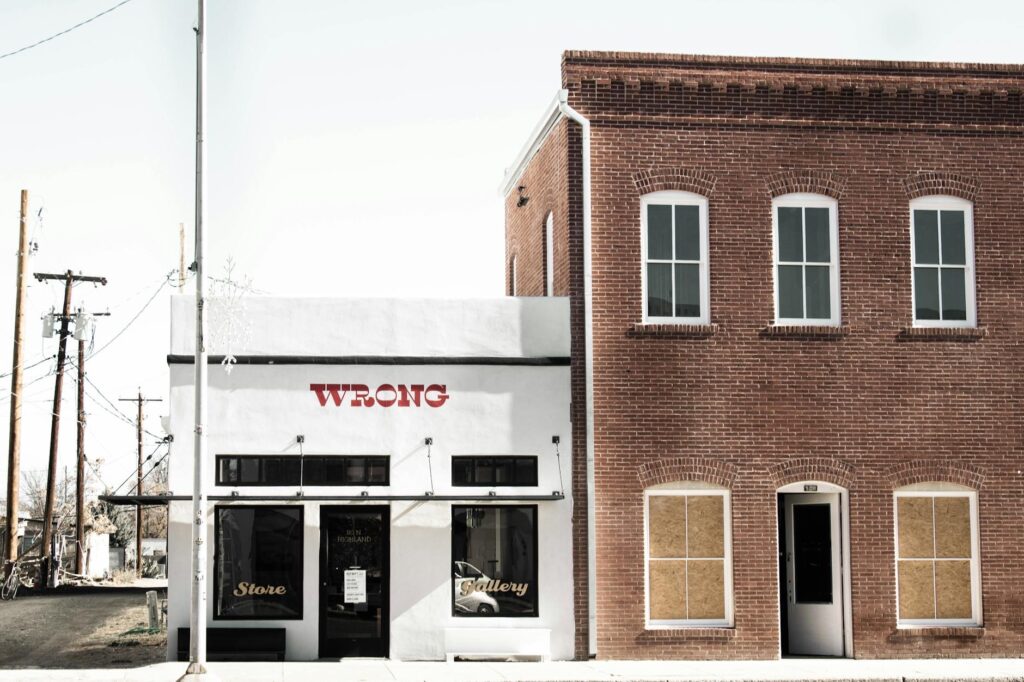
Marfa, Texas: Exploring the Mystery of Desert Lights and the Heart of Its Art Scene
Marfa, Texas stands out as a one-of-a-kind spot deep in West Texas. Known both for its elusive desert lights and a thriving arts community, this small town pulls in visitors looking for something different. Whether it’s the glowing orbs that dance on the horizon or the expansive art installations scattered throughout, Marfa blends mystery with creativity like no other place.
This post will walk you through Marfa’s rich history, the story behind the famous Marfa Lights, and how the art scene puts this quiet desert town on the map. You’ll get a clear picture of what makes Marfa more than just another stop in Texas—it’s a cultural destination with a character all its own.
The Enigmatic Marfa Lights: A Desert Mystery
The Marfa Lights have captured imaginations for well over a century, flickering against the vast, quiet desert around Marfa, Texas. These glowing orbs of light—often seen bobbing, hovering, or drifting—are as mysterious today as when they first caught the eye of local settlers. The story of these lights combines history, science, folklore, and even the paranormal. Let’s explore what makes these desert lights so captivating.
Historical Background and First Sightings
The earliest recorded sighting of the Marfa Lights dates back to 1883. A young cowboy named Robert Reed Ellison reported seeing a strange, dancing light while driving his cattle near the area. Shortly afterward, settlers Joe and Sally Humphreys also observed these lights in 1885, marking the beginning of many reports that followed. Local stories quickly formed around these glowing phenomena, including legends of Apache spirits and guardian ghosts tied to the land’s history.
These early accounts painted the lights as mysterious and otherworldly, linking them to native lore and early settler experiences. The fact that the lights were first observed during the time of widespread cattle drives and frontier life adds a rugged, almost mythical layer to their story.
For a deeper dive into the early history, the Texas State Historical Association offers a well-researched account of these initial sightings and the legends that grew from them.
Characteristics and Location of the Lights
The Marfa Lights appear east of the small town, mostly visible along U.S. Highway 90 near the old rail line. The typical viewing spot is a wide-open stretch on Mitchell Flat, a darkened desert plain far from city lights. Observers usually see:
- Colors: The lights glow in soft shades of white, yellow, orange, and sometimes red or green.
- Movement: They don’t just hover in place — the lights drift smoothly, change speed, or sometimes split into multiple orbs.
- Size and Shape: They often look like small orbs but can expand or shrink, flickering gently or pulsing in brightness.
The variability in size and motion adds to the intrigue, making the lights seem alive or reactive to the environment.

Photo by Lindsey Garrett
Scientific and Paranormal Theories
Scientists and skeptics have offered several explanations for the Marfa Lights, ranging from natural optical effects to geological phenomena:
- Mirages and Refraction: Some believe the lights are caused by atmospheric refraction, where light from distant cars, camps, or towns bends and creates illusions on the horizon.
- Piezoelectric Effect: Certain rocks in the area, especially igneous formations, might generate electrical charges under stress, causing minerals to emit faint light—a theory proposed by researcher David Bunnell.
- Vehicle Lights: Some tests have shown that distant car headlights and tail lights can match the movements and colors of the lights when viewed from certain spots.
On the other side are paranormal explanations rooted in mystery and folklore:
- Spirits and Guardians: Local legends say the lights belong to the spirits of Apache warriors or lost souls protecting the desert.
- UFO Activity: Some enthusiasts point to the lights as evidence of extraterrestrial visitors, adding an otherworldly dimension to the phenomenon.
While no explanation fully accounts for all sightings, the combination of scientific analysis and cultural beliefs makes the Marfa Lights a compelling puzzle.
For more on these theories, BBC’s travel article offers insights that balance folklore with scientific curiosity.
Cultural Impact and Tourism
The Marfa Lights have become a central part of the town’s identity. They inspire local artists, filmmakers, and writers, contributing to Marfa’s reputation as a creative hotspot. Here’s how the lights influence the area:
- Local Culture: Stories and artwork around the lights celebrate both mystery and the stark beauty of the West Texas desert.
- Media and Literature: The phenomenon has appeared in documentaries, television shows, and books, fueling public fascination.
- Tourism: The lights draw visitors year-round. People come hoping to catch a glimpse, often gathering at designated viewing points at night. Local businesses offer tours and host special events around the lights.
This blend of science, legend, and art helps maintain Marfa’s unique vibe, attracting tourists who crave something beyond the ordinary.
You can explore how the lights engage the community and visitors alike through resources like this recent local news coverage.
Through the Marfa Lights, the town connects nature with culture, offering a rare mix of mystery, natural wonder, and artistic spirit all in one place.
Marfa’s Rich History and Desert Setting
Marfa’s charm isn’t just in the mysterious desert lights or its bustling arts scene. It’s also deeply rooted in a history shaped by railroads, military presence, and its unique desert landscape. Understanding Marfa’s past and environment helps you appreciate how this remote town grew from a simple stopover to a cultural hub. Let’s look closer at the key milestones and the natural setting that frame Marfa’s story.
Founding and Early Growth
Marfa began its journey in 1883 as a modest railroad water stop on the Galveston, Harrisburg, and San Antonio Railway. It was a necessary refueling point for steam engines trudging through the vast West Texas desert. From this practical beginning, Marfa quickly expanded as freight and cattle industries flourished.
- The town’s population grew steadily throughout the late 19th and early 20th centuries.
- As commerce increased, Marfa became more than a stop along the tracks—it started to take on its own character.
- Its name is believed to be inspired by a character from a Russian novel, lending a touch of intrigue to its origins.
By the 1930s, Marfa had developed into a bustling small town, serving as a key gateway to the rugged Trans-Pecos region. If you want to dive deeper into Marfa’s early roots, the City of Marfa’s official history offers detailed insights.
Military Significance and Transformation
The military played a major role in Marfa’s mid-20th-century history. During the Mexican Revolution, Marfa’s proximity to the border made it strategically important. Later, in World War II, it became home to the Marfa Army Air Field.
- This air base trained pilots and supported wartime efforts, drawing soldiers and economic activity to the area.
- Fort D.A. Russell nearby also stood as a significant military installation.
- After WWII, military downsizing led to the closure of these bases, including the Marfa Army Air Field by 1947.
Despite the closures, the military era left a lasting mark on Marfa’s infrastructure and community. Some of the old barracks and facilities now serve new purposes, including arts venues. For a closer look at Marfa’s military past, you might explore the history of Marfa Army Air Field.
Geography and Climate of the Marfa Plateau
Marfa sits on a broad plateau surrounded by mountain ranges, about 4,800 feet above sea level. This high desert setting shapes much of its weather and lifestyle.
- The plateau offers expansive views of the Chihuahuan Desert, framed by the Davis and Chinati Mountains.
- The climate is semi-arid, with hot summers, cool nights, and mild winters.
- Weather patterns here can change quickly—dry winds might blow in one moment, followed by sudden rain showers.
This climate has a dual effect: it demands resilience from residents and visitors but also creates stunning light and shadow plays that inspire artists and adventurers alike. The sharp desert contrasts and crisp air help explain why Marfa feels both remote and alive.

Photo by Mizzu Cho
Marfa’s location and history combined make it a town where the past and the environment are deeply connected—helping shape its unique character today.
The Thriving Arts Scene: Minimalism Meets Desert Landscape
Marfa has transformed from a quiet desert town into an international hub for minimalist and site-specific art. This reputation didn’t come overnight. It started with visionary artists who saw the vast skies and empty spaces as an ideal canvas for large-scale creative works. Today, Marfa’s arts scene is a lively mix of established institutions, experimental spaces, and iconic installations that draw art lovers from all over the world. This section explores how minimalism found a home here and how the community continues to support a vibrant arts culture.
Donald Judd and the Chinati Foundation
Donald Judd, a leading figure in minimalist art, is largely responsible for putting Marfa on the global arts map. In the 1970s, Judd sought a place where he could showcase his large-scale, geometric sculptures outside the traditional gallery setting. Marfa’s open desert and affordable space drew him in.
Judd acquired nearly 340 acres of old military buildings from Fort D.A. Russell, repurposing them as a site to permanently display contemporary art. This converted military base became the Chinati Foundation, established in 1986. The foundation emphasizes site-specific installations that respect the desert’s vastness and silence, inviting viewers to experience art in relation to the natural environment.
The Chinati Foundation remains a cornerstone of Marfa’s art community, housing works not only by Judd but also other celebrated artists. Judd’s vision helped shift the town’s identity toward an international arts destination without compromising the raw beauty surrounding it.
Key Art Venues and Installations
Beyond the Chinati Foundation, Marfa hosts several other major venues where contemporary and experimental art thrive:
- Ballroom Marfa: Housed in a 1920s-era former ballroom, this space supports non-collecting exhibitions and performances that challenge visitors to interact with new ideas. It’s a hub for rotating art shows, film screenings, and talks.
- Prada Marfa: Perhaps the most photographed spot in Marfa, this permanent installation is a replica Prada store sitting isolated in the desert. Created by Elmgreen and Dragset in 2005, it blends fashion, art, and the wilderness into a striking commentary on consumerism.
- Numerous galleries scattered throughout town showcase works by local and visiting artists, focusing on contemporary themes and experimental approaches.
Each venue offers a different way to connect with minimalism and site-specific art, making Marfa a truly diverse cultural experience.

Photo by Lee Andrews
Community and Experimental Art Spaces
Marfa’s art scene isn’t limited to museums and big installations. Smaller galleries and community-focused art centers play a vital role in encouraging diverse and experimental work.
Local spaces like Marfa Open Arts promote accessibility and community engagement by hosting workshops, artist residencies, and public events. These grassroots centers help new and emerging artists find a place to grow, while encouraging creative dialogue between residents and visitors.
This network of experimental spaces often showcases multimedia works, public art projects, and collaborations across disciplines. Their presence ensures that Marfa remains a place not just for viewing art but for making it, in a way that reflects the town’s independent spirit and wide open landscape.
Together, these elements make Marfa’s arts scene a lively blend of minimalism, site-specific innovation, and community creativity, mirroring the stark yet inspiring desert surroundings.
For a detailed overview of the Chinati Foundation’s history and exhibitions, check out this NPR profile of Marfa’s arts transformation. You can also learn more about contemporary art events at Ballroom Marfa.
Experiencing Marfa: Attractions Beyond the Lights and Art
Marfa is more than just the mysterious lights and vibrant art scene. This area offers a variety of attractions that capture the spirit of West Texas through its rugged landscapes and preserved history. From outdoor adventures in nearby parks to visiting historic landmarks, there’s a chance to connect with Marfa’s wide-open spaces and rich cultural roots. Here’s a guide to exploring some of the standout spots that bring a new dimension to your Marfa visit.
Big Bend National Park and Outdoor Recreation
If you want to experience the true essence of the desert, a short drive from Marfa takes you to Big Bend National Park, one of Texas’s most stunning natural areas. This vast park offers more than 800,000 acres of desert, mountains, and river valleys to explore.
- Hiking and Exploration: Trails range from easy strolls to challenging climbs, letting you see everything from desert flora to rugged peaks.
- Stargazing: With low light pollution, the night sky here bursts with stars. Bringing a telescope is rewarded by views of constellations and the Milky Way like nowhere else.
- Wildlife Watching: Keep an eye out for roadrunners, javelinas, and even mountain lions roaming the desert terrain.
- Chinati Mountains: Near Marfa, these mountains offer excellent hiking with breathtaking views of the surrounding desert basin.
Big Bend’s natural beauty is not just for adventurers. It’s a perfect spot to reconnect with nature and appreciate the quiet grandeur of the West Texas desert. For additional details on planning your visit, the official Visit Marfa site highlights nearby parks and outdoor activities.

Photo by Mizzu Cho
Historic Sites and Museums
Marfa’s story is reflected in its preserved buildings and museums, each telling a piece of the area’s rich cultural past. A visit to these landmarks gives insight into the life and history of this desert town beyond its artistic and natural allure.
- Presidio County Courthouse: Standing proudly in the town square, this historic courthouse is an architectural gem dating back to the 1880s. Its classic style and sturdy presence reflect Marfa’s development as a center for justice and administration. The courthouse grounds are a great spot for photos and local events.
- Marfa and Presidio County Museum: Just a short walk from the courthouse, this museum showcases local artifacts, photographs, and exhibits covering the region’s ranching, military, and indigenous histories. Their collection offers a well-rounded look at how the area evolved over time.
- Blackwell School Museum: This site preserves a key part of Marfa’s African American heritage. The Blackwell School operated from 1909 to 1965, serving local Black children before desegregation. The museum today shares stories of education and community, providing a meaningful experience for visitors interested in civil rights history.
These historic spots allow you to see a different side of Marfa — one that honors its roots and the people who shaped it. For more about local museums and cultural centers, the Marfa museums guide on TripAdvisor is a helpful resource.
Exploring these natural and historical offerings deepens your connection to Marfa beyond the lights and art, enriching your visit with layers of landscape and legacy.
Wrapping Up Marfa’s Unique Spirit
Marfa isn’t just a spot on the map; it’s a place where the unexpected feels normal. The strange glow of the Marfa Lights and the bold creativity of its art scene combine to create an atmosphere unlike anywhere else. This blend of mystery and culture makes Marfa more than a town—it’s an experience that stays with you.
A Town Where Mystery Meets Art
What sets Marfa apart is its ability to balance the unknown with the tangible. The shifting lights on the desert horizon remind us that some mysteries resist explanation. Meanwhile, the town’s rich arts scene invites you to engage, reflect, and see the world through fresh eyes. It’s this interplay that keeps people coming back.
- The Marfa Lights create a magical backdrop, drawing visitors with their elusive glow.
- The art installations and galleries challenge conventions and highlight Marfa’s bold spirit.
- Community spaces and local stories bring deeper layers to this desert town’s identity.
Together, these elements make Marfa alive—not just a place to visit, but a place to feel.
Why Marfa Should Be on Your Travel List
If you’re looking for a trip that combines outdoor wonder, creative energy, and a touch of the unexplained, Marfa delivers. It’s a break from city life where the desert stretches wide and possibilities feel endless.
Exploring Marfa offers:
- Moments of quiet awe watching the lights flicker.
- Encounters with groundbreaking art that respects its surroundings.
- A chance to step into stories both old and new, shaped by history and landscape.
This unique combination shapes Marfa into a must-visit destination in West Texas, with something to spark curiosity for every traveler.
For more on Marfa’s history and current vibe, you can explore the official Marfa city site or the Texas State Historical Association’s overview.
